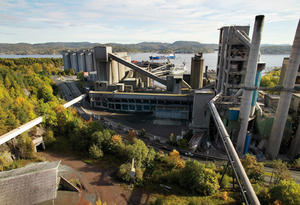EnergyNew technology reduces cost to capture carbon
The U.S. Department of Energy’s Savannah River National Laboratory (SRNL) has signed an Exclusive Rights Agreement with Partnering in Innovation, Inc. of Orlando, Florida, in support of new carbon capture technology. Originally developed at SRNL, this approach will help open global markets for cost-effective industrial carbon dioxide (CO2) capture and re-use.

Killing two birds with one stone // Source: mit.edu
The U.S. Department of Energy’s Savannah River National Laboratory (SRNL) has signed an Exclusive Rights Agreement with Partnering in Innovation, Inc. of Orlando, Florida, in support of new carbon capture technology. Originally developed at SRNL, this approach will help open global markets for cost-effective industrial carbon dioxide (CO2) capture and re-use. This technology captures CO2 emissions from industries, allowing the gas to then be used to collect more oil from known reservoirs in an environmentally safe manner. The new process overcomes the significant cost limitations of standard separation and concentration methods.
“This is a new aqueous approach to carbon capture that uses standard processes and components in a novel configuration,” explained SRNL Principal Technical Advisor Gerald Blount. “The process is non-hazardous, carbon-neutral, scalable and easier to implement than competing capture systems. From an investment perspective, the projected near-term returns are excellent.”
“The main component of the process is a mass transfer system that is suspended in a deep, water-filled sealed well. By using hydrostatic pressure and multiple efficient energy recovery processes, it is possible to capture and purify the CO2 at a cost that opens the enhanced oil recovery market,” said Blount. “This technology reduces the cost of post-combustion capture by more than 50 percent over most current and emerging technologies. It will help enhance oil recovery and simultaneously reduce global greenhouse gas emissions. It will also allow for the recovery of more oil from known reservoirs and promote energy security.”
